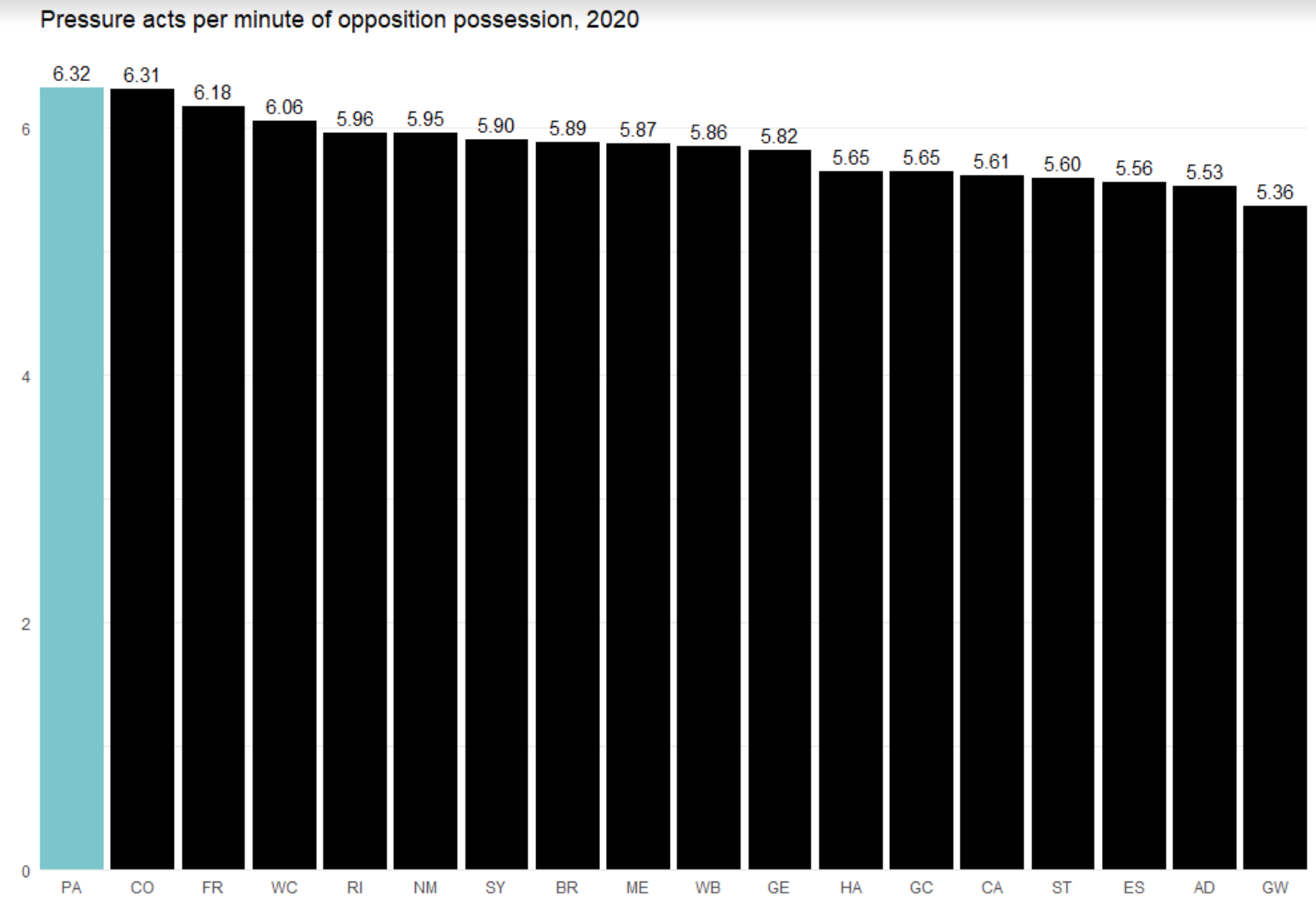Under Old Management: Why Ken Hinkley’s Port Adelaide Are Premiership Contenders
Last updated: Oct 7, 2020, 4:06AM | Published: Oct 6, 2020, 10:59PM
Ken Hinkley came into season 2020 as the AFL’s most under-pressure coach, and boldly stated that his expectations for the year were to play finals and contend for the premiership.
Those comments were met with much scepticism at the time, yet here we are with only a handful of games left in the season, and that’s exactly where Port Adelaide sit.
Earlier this year I went through all of 2020’s new coaches and assessed how their teams were different from the previous year, under their new management.
Port Adelaide are a team under old management, but they have taken a big leap forward with last Thursday’s qualifying final win stamping them as legitimate flag contenders.
So today let’s examine at them across the same five categories – winning the ball, moving the ball, scoring, defending and demographics – to see how it was done.
RELATED: So, who's going to win the 2020 Premiership according to Stat's Insider's modelling?
WINNING THE BALL
Port Adelaide have been one of the AFL’s best ball-winning teams in 2020, but that’s nothing new. It was much the same last year also.
In 2019 for example they had a +4.95 clearance differential, which ranked them No.1 in the league. In 2020, it’s up to +5.72, and they’re still first overall.
When we look instead at pressure, they’ve got from 2019’s third-best pressure acts per minute of opposition possession side (6.09) to 2020’s top team (6.32).

Last year they were second for tackles per minute of opposition possession (1.3), this year they’re first (1.43).
In terms of actually generating turnovers from their pressure, they were No.1 for opposition seconds before turnover last year with 37.9. This year it’s 38.9, and they’re still No.1.
The only measure that has changed noticeably is their groundballs differential, which is up from -2.7 (14th) to +2.9 (fifth).
But overall it’s clear that while winning the ball at the clearances or through forcing turnovers is a strength of this team, it’s not a new one.
RELATED: Understanding how Clearances Shape the Results of AFL Games
MOVING THE BALL
One measure that's improved greatly for Port is their ability to retain possession of the ball, rather than cough it up.
They’re averaging 45.2 seconds of possession in 2020 before a turnover, which is good enough to be ranked 4th in the league and a big step forward from 13th last year.
In other ball movement stats, they’re broadly similar to where they were at in 2019.
They were 12th for metres gained per minute last year, and in 2020 they’re 11th. They were 14th for kick-to-handball ratio, now 11th. They were 12th for uncontested-to-contested possession ratio and have remained in that ranking this year.
Last year it was good enough to get them an inside-50 differential of +9.5 per game, the best in the league – and this year they’re maintaining that, staying at No.1 with +9.4.

RELATED: Why haven't we put enough respect on Port Adelaide’s name?
SCORING
Port Adelaide averaged 1.56 points per minute of possession last year and are going at 1.58 this year, which might not seem like much of a change.
But in a year where most teams have seen their ability to score decline, treading water has proven an impressive feat from the Power.
They were ranked 12th overall in 2019 but those numbers are good enough for fourth in 2020, which is no doubt one of the reasons for their success.
They are kicking a goal from 21.5% of their inside-50s, which is an improvement on 20.1% last year and has seen them rise from 15th to 7th.
No doubt having Charlie Dixon available consistently throughout the year as a forward target is a big part of why they’ve improved here.
Their goalkicking accuracy has remained roughly stable, and is a little below average. But Dixon has been one of their best in this regard.
RELATED: Does Footy Really Change When Finals Start?
DEFENDING
Arguably Port Adelaide’s biggest improvement this year has been in their defensive ability, where they’ve gone from conceding 1.58 points per minute of opposition possession (10th) to just 1.3(3rd).

That is a mighty effort which has also seen them reduce their opposition’s percentage of goals from inside-50s from 23.3% to 20.2%, ranking them the 6th lowest in the competition this year.
They’ve also seen opposition goalkicking accuracy decline this year from 47.4% to 46.3%, suggesting they’re forcing opponents into more difficult positions.
That’s still not a strength of theirs necessarily (they’re ranked 10th for it in 2020), but even an incremental improvement can be crucial.
Their backline isn’t known for big names or star power, but they’re perhaps the biggest driver of Port Adelaide’s 2020 improvement.
RELATED: Does elite defence still translate to AFL premierships?
DEMOGRAPHICS
Port have become a more mature side in 2020. Last year they were ranked 9th for average age at 25.21, but in 2020 it’s 26.23 making them the fourth-oldest team in the competition on average.
They fielded 2209 games of experience on average last year, eighth in the league, but they’ve pushed it up to 2531 this year, seeing them come in at fourth.
RELATED: For Young And Old: How Age And Experience Affect AFL Results
CLOSING THOUGHTS
My biggest takeaway from these numbers is that Port’s rise in 2020 shouldn’t be surprising as it was – we should’ve seen it coming.
The Power in 2019 were the league’s best clearance side, best pressure side, and best inside-50 side. When you’re nailing those three things it should be clear you have massive potential.
Last year they let themselves down by only getting a so-so return from their forward play, giving up the ball and allowing their opponents to score too easily.
Now they’ve tidied those areas of their game up while still maintaining or even improving upon their other strengths.
The growing maturity of the playing list has no doubt helped, but at the same time, respect has to be given to an impressive season of coaching by Ken Hinkley.
It’s damn hard to find a weakness in Port Adelaide’s numbers, and a coach whose once looked to be on a knife’s edge is now as sharp as ever.
Note: The stats on points from stoppages/possessions used in this article are recorded as they were published after each game in the Herald Sun.
For a small number of matches these stats were never published, and there is also known to be a small number of typographical errors in the original source data.
Did you enjoy this article? Join our free mailing list to get the best content delivered straight to your inbox, or join the conversation by leaving a comment below or on the Stats Insider Twitter or Facebook page.



